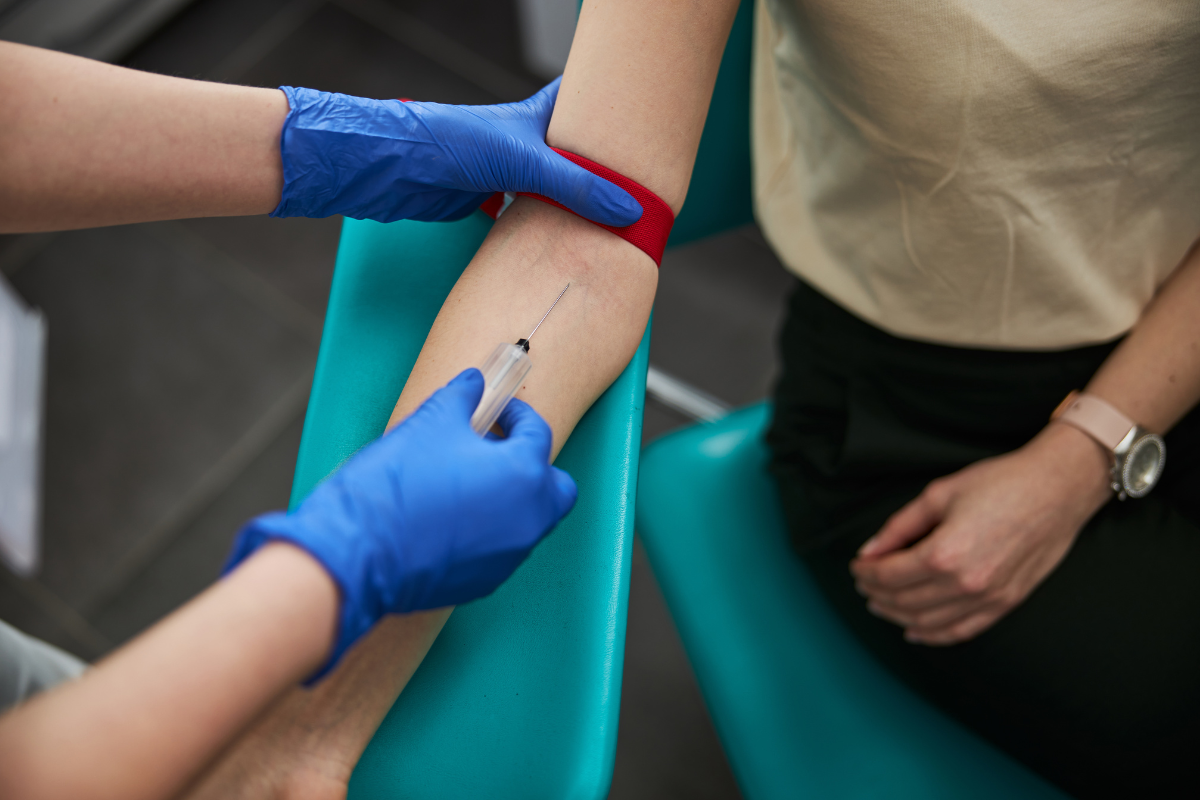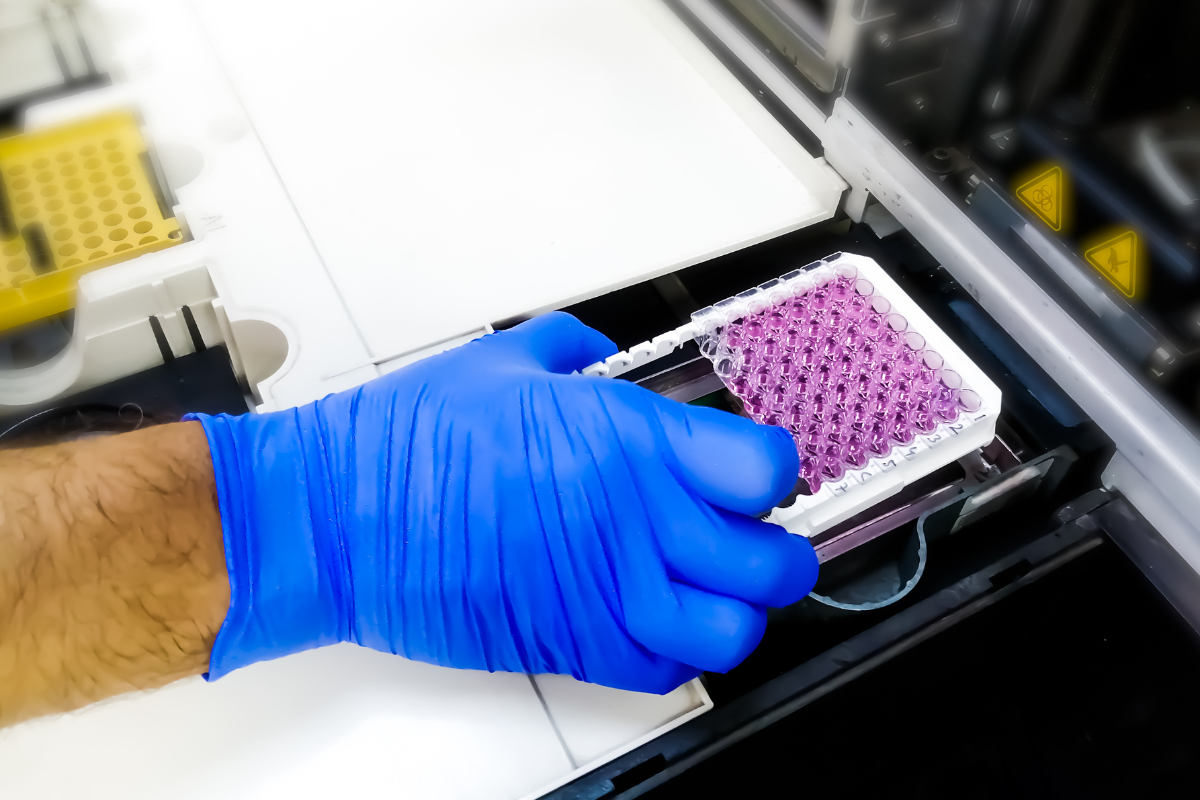What’s Next for Predictive Biomarkers in Immunotherapy?

Predicting immunotherapy response is a predominant and increasingly important concern for oncology. In fact, the use of predictive biomarkers over the last ten years has steadily grown and now accounts for approximately three-quarters of the oncology pipeline.
As of 2021, the global oncology market was valued at 85 billion USD and is expected to reach 277.2 billion USD by 2030 at a CAGR of 12.6%. Key market drivers include the prevalence of cancer, the trending adoption of immunotherapy, and the availability of advanced healthcare facilities. Rising consumer expenditure on healthcare is also causing a noticeable impact on the field.
As the biggest and fastest-growing engine for biopharma R&D, oncology requires predictive biomarkers to better direct and improve patient response to immunotherapy treatments. The demand for cancer immunotherapy can largely be attributed to long-term treatment effects and convenience. Immunotherapy offers an improved treatment option devoid of unfavourable side effects such as organ failure, cancer reoccurrence, and the high costs commonly associated with conventional chemotherapy.
Featuring exclusive insights from key opinion leaders at Oxford Global’s Biomarkers Week 2021, this article explores the future projections of the predictive biomarker market for improving immunotherapy response.
Maximising Immune Response with a Combination Biomarker Approach:
Using a composite of biomarkers can facilitate a precision approach to immunotherapy treatment. A combination approach is preferable to single biomarker use due to its ability to provide a doubly accurate form of measurement for immunotherapy. Whilst there are still some areas for development, harnessing multiple biomarker technologies in the clinical setting is an exciting prospect.
- Liquid Biopsy For Cancer Prevention and Treatment
- Improved IO Clinical Trials with ImmunoPET Imaging
- Re-Educating the Immune System: a ‘Brave New World’ in Immunology
Richard Hughes, Director of Strategic Marketing at NeoGenomics Laboratories, claims that “there is a lot more work that needs to be done for combination biomarkers, especially on the patient end of the response.” However, efforts are being made to address such difficulties, and The Institute of Cancer Research, London, is especially working towards combining clinical findings with computational biology. The organisation opted to use composite biomarkers to treat colorectal cancer after discovering issues with heterogeneity with single biomarker use.
Anguraj Sadanandam, Director of the Centre for Global Oncology and Head of Systems and Precision Cancer Medicine at The Institute of Cancer Research (ICR), explains how “instead of a single indication, we decided to use a multiple gene concept as a biomarker. For example, we have defined four to five subtypes in colorectal cancer, which can be identified using 800 genes.” The ICR experimented with different machine learning approaches to determine how much it could shrink the biomarkers. “We found that on average, eight genes per subtype with higher sensitivity are required for the patient to respond to,” Sadanandam continued.
The ICR concluded that gene expression alone could not fully capture treatment response for colorectal cancer. “The potential for biomarker use does, of course vary depending on what the clinical endpoints are; factors that are very important to the predictive outcome,” Sadanandam highlighted.
Data Analysis – The Challenges:
Predictive determination for immunotherapy response relies heavily on digital pathology and data analysis. Ed Schuuring, Head of the Laboratory for Molecular Pathology at the University Medical Center Groningen, explains how “if trials were only to rely on biopsies, then we would not be able to answer everything.” Systematic technologies such as PET scanning and in vivo imaging provide an objective view of the entire body, and with it, extensive information. Other example technologies include serum testing, virtual microscopy, and tumour immune microenvironment phenotypes.
“Realistically speaking, the more sophisticated the biomarker technology and techniques employed, the more difficult data extraction is”
However, it is not always possible to feed the diversity of data collected from patients through a singular platform. There needs to be a collaboration of different disciplines to measure and interpret statical biomarker findings accurately.
“Realistically speaking, the more sophisticated the biomarker technology and techniques employed, the more difficult data extraction is,” Schuuring continued. In particular, novel platforms such as advanced PET scanning, liquid biopsies, and microbiome biomarkers still require development before they can efficiently lend themselves to concise data analysis. “They are not yet able to combine all of these data factors to perform simplified statistical readings,” Schuuring said.
Diagnostic Innovation for Predictive Biomarkers:
One strategy to overcome such issues is combining results through computational analysis. Achieving the next level of data acquisition from patients requires digital methods, nevertheless, ethical issues persist around the necessity of patient record access. “When it comes to capturing data on an electronic medical record, whether for ctDNA or microbiome analysis, we must be particular in determining who will gain access,” Huges stated.
It is essential to decide and disclose the exact data handling parameters in clinical research. For instance, pharma companies should adequately communicate whether data records will be passed on to all interventionists and physicians along the care pathway for that patient. Moreover, ensuring transparency about record handling can address these ethical considerations.
Prioritising Multiple Data Analysis with Limited Patient Samples:
Limited patient samples often take the form of restricted blood volume or difficulty accessing fresh tumour samples. When this occurs, data analysis is made more difficult. In particular, multiple data analysis becomes challenging and is, as Nadia Hassounah, Principal Scientist at Novartis explains, “a problem we face constantly in clinical trials for biomarker development.”
It is essential to decide and disclose the exact data handling parameters in clinical research.
Hassounah spoke of Novartis’s experience with limited patient samples during Phase I trials. “We have to think about how to most efficiently collect the necessary readouts from a minimal data set or tissue sample,” she continued. Opportunities for overcoming this hurdle include relying on RNA and DNA isolation to multiple slides from a single biopsy.
“Prioritising biomarkers to determine which one has shown the optimal pharmacodynamics (PD) readout during preclinical trials is critical,” Hassounah claims. Selecting an adequate platform to provide a broader set of readouts is also beneficial. Hassounah identified RNA sequencing as a top priority for tissue biomarker analysis.
Future Outlook:
Predictive biomarkers for immunotherapy response are an important development area for the pharmaceutical industry. Research exploration continues to interrogate the complex interaction between the immune system’s regulation and the comprehensive diversity of the effects of immunotherapy. As the development of basic technology enters the landscape, we can expect to see improved accuracy in biomarker evaluation and monitoring techniques.
Advanced measurement technologies will continue to maximise the patient benefits of immunotherapy. This will, in turn, facilitate the next generation of the transformative treatment. At Oxford Global, we look forward to welcoming the future of immunotherapy and its predictive biomarkers.
Want to stay up to date with the latest Biomarker news? Register now for Oxford Global’s flagship event, Biomarkers US: In-Person. This is a must-attend forum covering the latest trends transforming biomarker and translational research.






